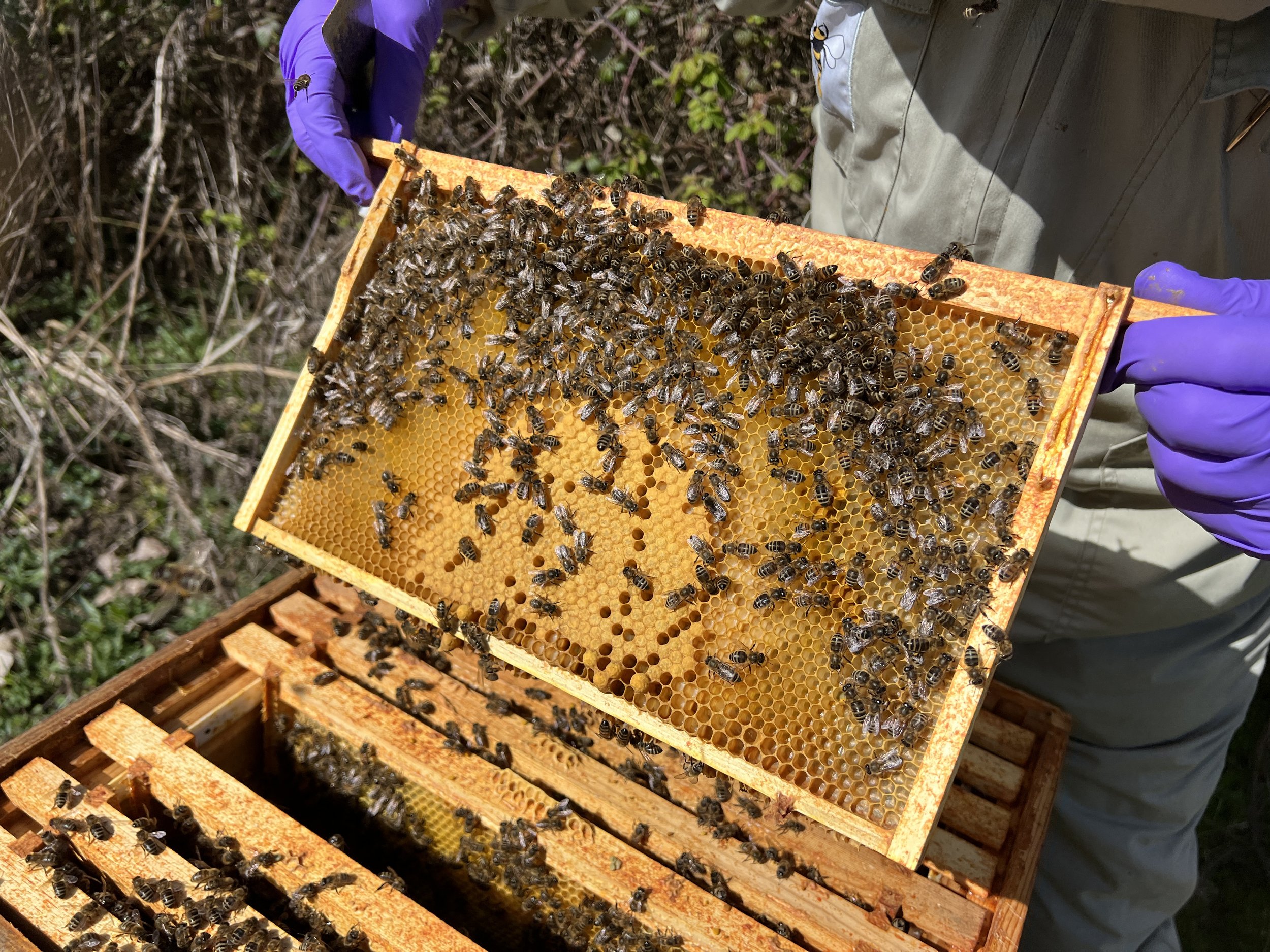Flat Out Farming™ Blog: What’s happening with the bees?
We’ve got a pretty dismal record so far in bee-keeping here on the farm, so much so it’s actually become a running joke! But we keep trying!
We have a ‘bee mentor’ a lovely chap called Simon who is bursting with bee knowledge and has been helping us for over a year with our beekeeping – he even brought some of his bees here to our ‘apiary’ to see if it was the location that’s the trouble because whatever he says the bees ‘should’ be doing, ours are doing something else(!). Once in place last year, Simon’s hive romped on with the beans we had around the farm - he had about 60lb of honey off his hive, and our hive that was 2 metres away from his, a similar sized colony, produced absolutely zilch. ZILCH. Actually, they produced three frames but the wasps managed to get in and rob them… highly unusual through a colony of that size, but anything that’s unusual for most seems to happen to us. In fact everything with our bees has been highly unusual! I was quite mortified at our hopeless bee-keeping and to add insult to injury the honey was bloody lovely. Cheers Simon.
“Our hive that was 2 metres away from his, a similar sized colony, produced absolutely zilch. ZILCH.”
At our apiary with help from Simon!
Anyway we’ve not given up yet - it’s always a nice sign when the bees start emerging after winter and this week they’ve been very visible outside the hive. In winter they cluster up tightly to survive and some may die off, they protect the queen and effectively the colony goes dormant as the queen stops laying eggs (during spring and summer worker bees live approximately six weeks and then are replaced). Damp, disease, cold and lack of food can kill them in winter, and the odd mouse attack, so they need to be decent sized colony with plenty of stores going into the winter if they are to survive. My first ever colony didn’t, and apart from a handful of bees that were coming out of the hive when I eventually made the first inspection they had all died. I was gutted. After the second year my new colony survived, but then started laying ‘drones’ or male bees, so they also died.
Now we’re in year three and I have two colonies through winter – not ever so big or strong, so not as many bees as we’d have liked, and obviously Simon’s are romping away (rolls eyes) but they have what we’d hope to see with a quick first inspection as we take the crown board – the board above the frames – off the hive for the first time since the end of last summer… we have eggs, which means the queen must be still in there, alive and now laying again, we also saw larvae and capped brood so all stages of bees production, which is positive and important as they will need to build up again after four or five months of no laying. There was some food or ‘stores’ as they are called in there, so they can survive, plus there’s plenty of pollen on bees going into the hive, which means they are finding a food source, and there is no sign of any disease. All those boxes were ticked – the bees will be looking for food to bring back to the hive and as the rape is now in flower they should be heading in the right direction.
Not as many bees as I’d have liked in my colonies, but live bees at least!
Here you can see capped brood in a really nice shape in the middle of the frame. The raised bobbles are drone brood (male bees) and around the brood the bees are putting their stores. This is a text book frame.
We didn’t faff much, or go through every frame, so I didn’t take any close-up pics, but once we’d seen what we had needed to we closed the hive back up and left them to it – sometimes better as every little bit of faffing you do with them risks killing or injuring the queen, which can put the colony in jeopardy. We also put some ‘supers’ on, which are boxes with frames in where the honey goes and a queen excluder – this means she can only lay eggs in the brood box designed for her bee production, and not in the frames where the pure honey is stored. Adding the super above gives the colony a feeling of ‘space’ so they are less likely to swarm, but somewhere to put what they are bringing in if they need it. Ideally at the end of the season there’s a bit of surplus for us too!
Here you can see pollen going into the hive in the bees’ ‘pollen baskets’.
We’ll check the bees again in a couple of weeks when the warmer weather is more consistent! Fingers crossed for bee keeping season 2023…..
Jen



